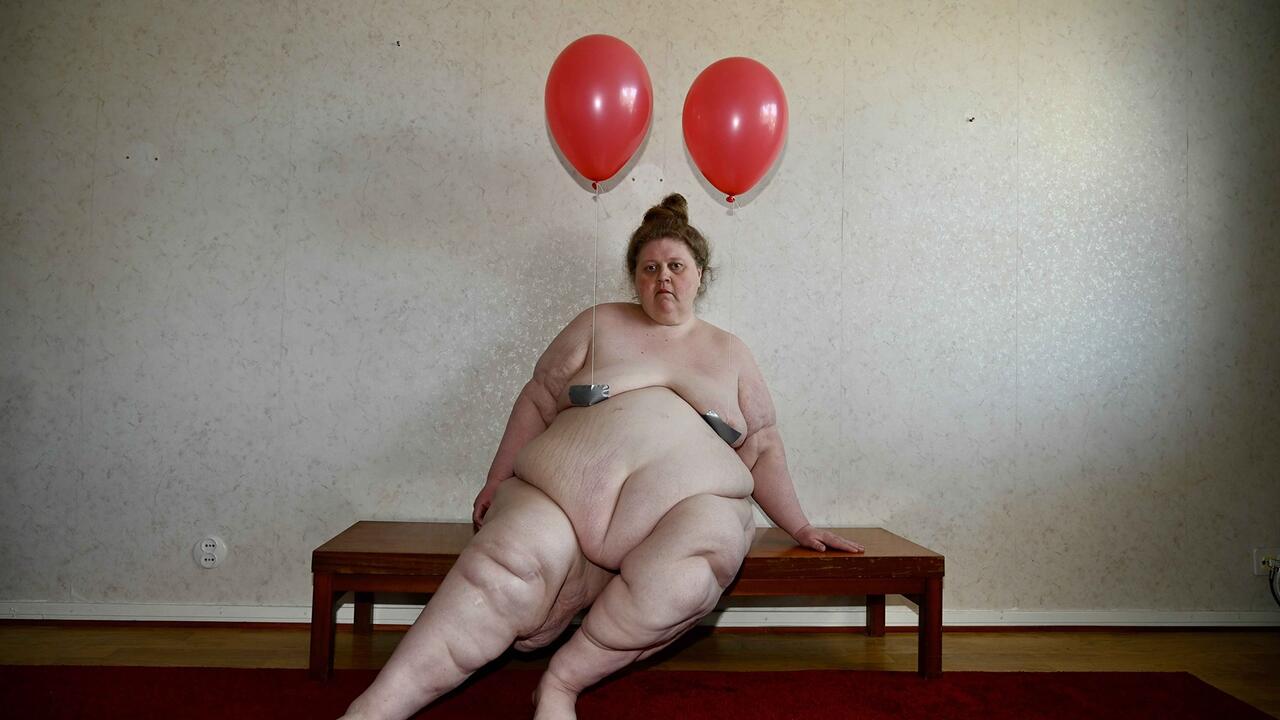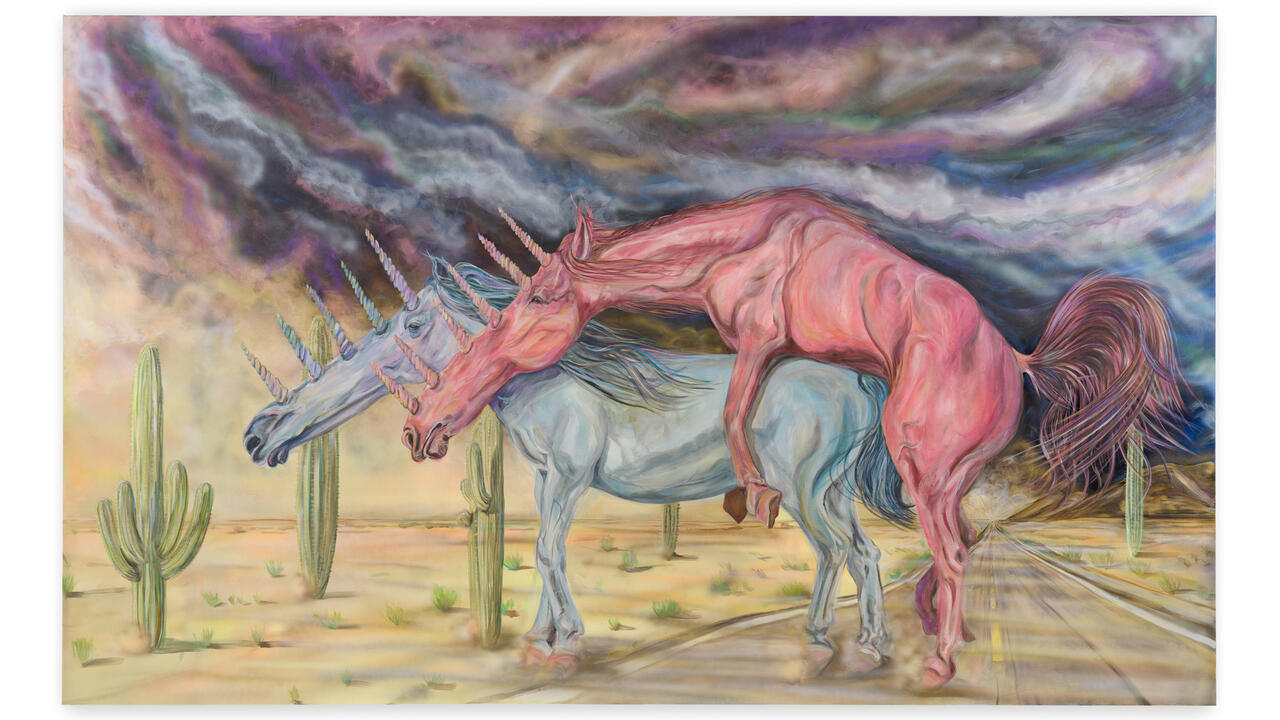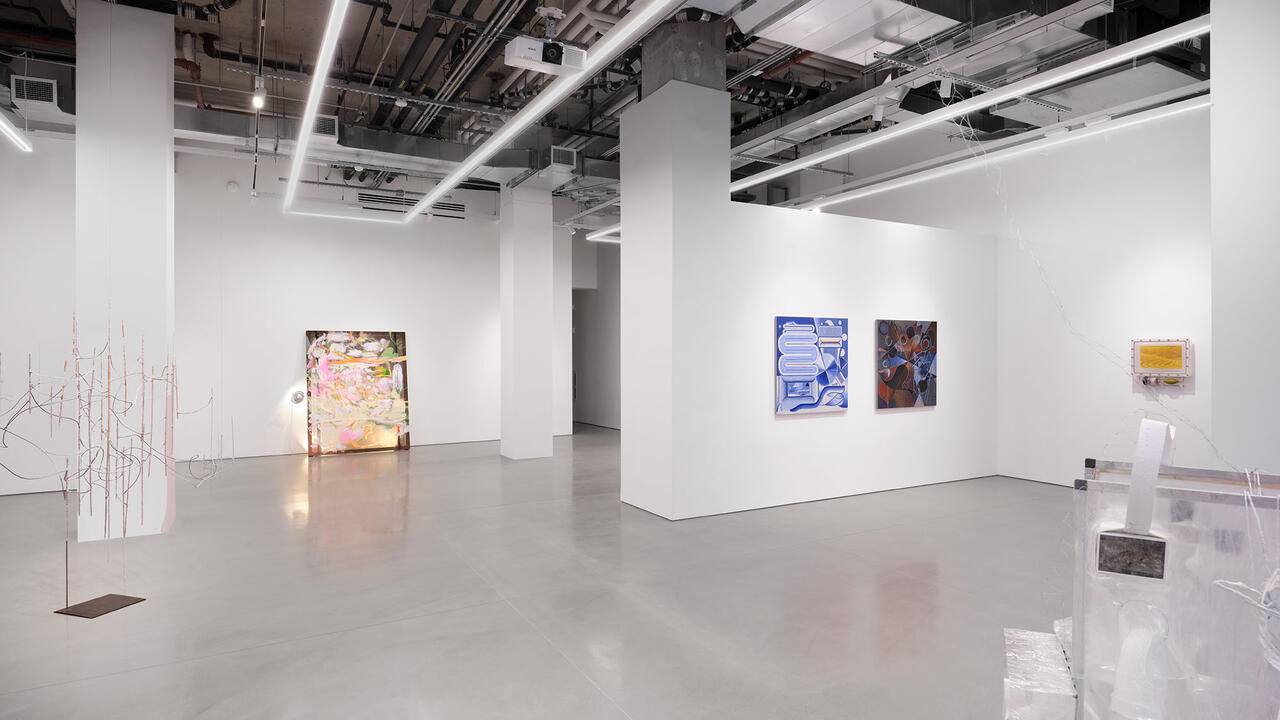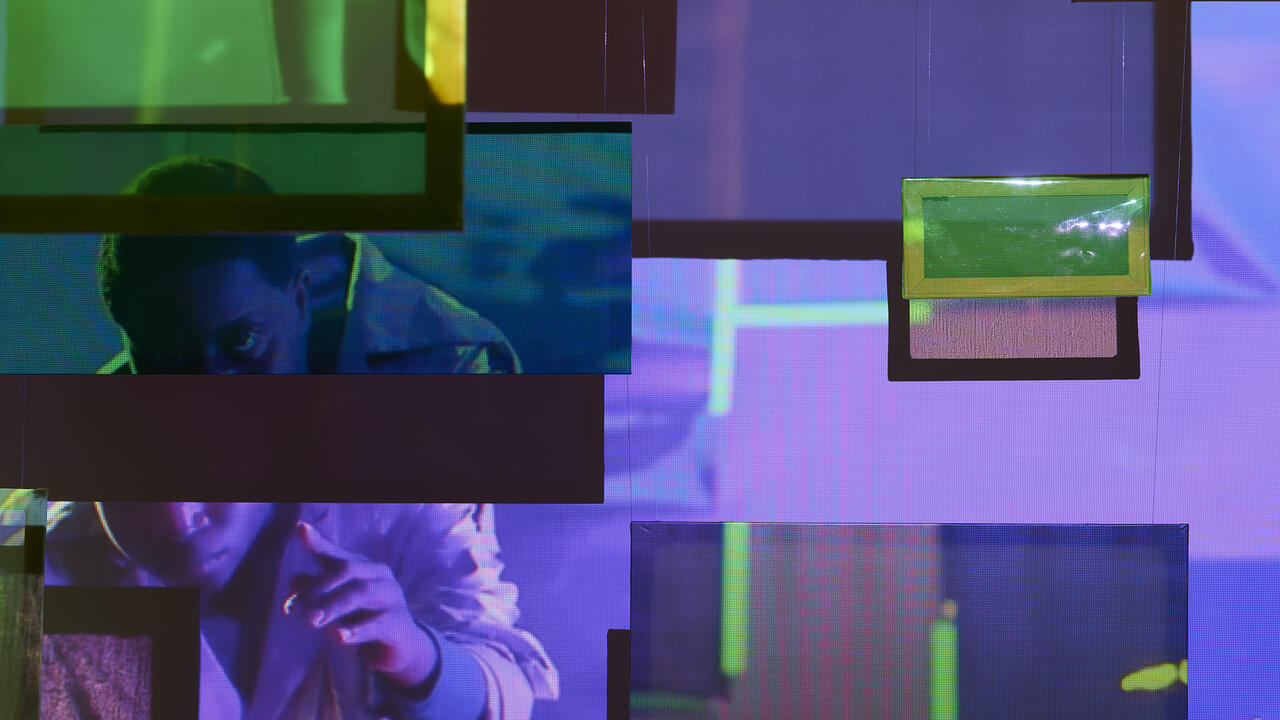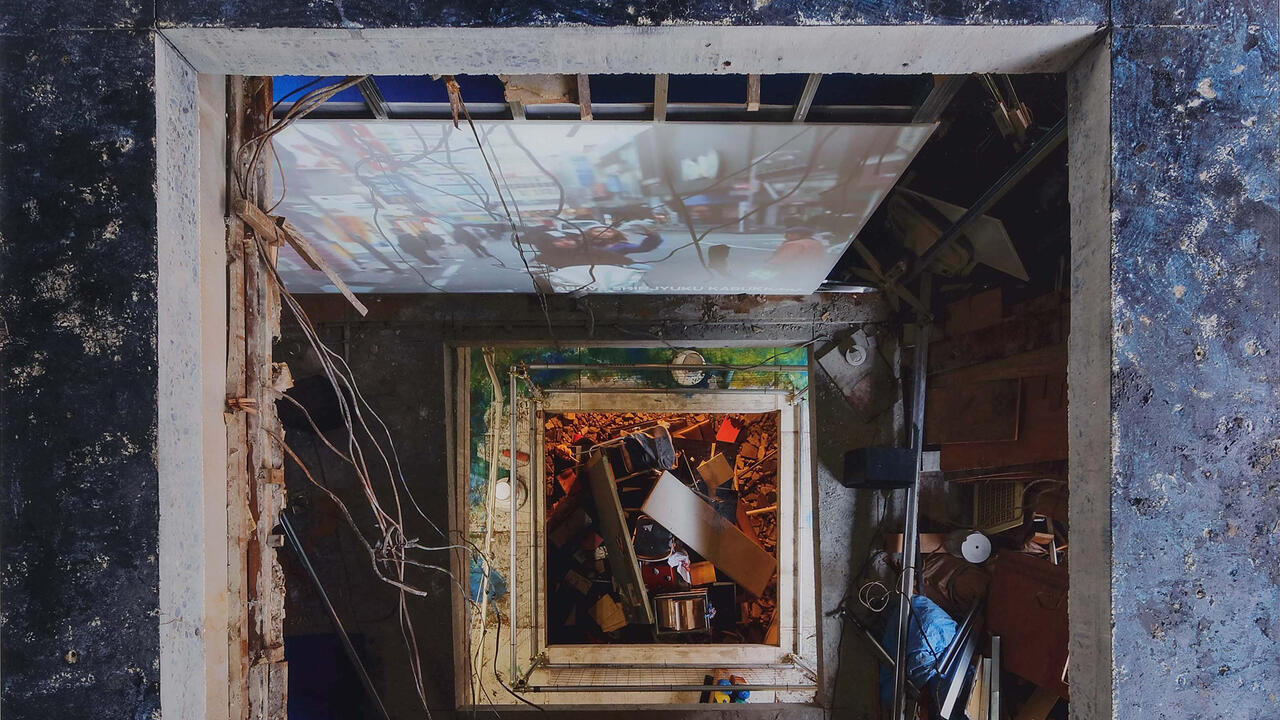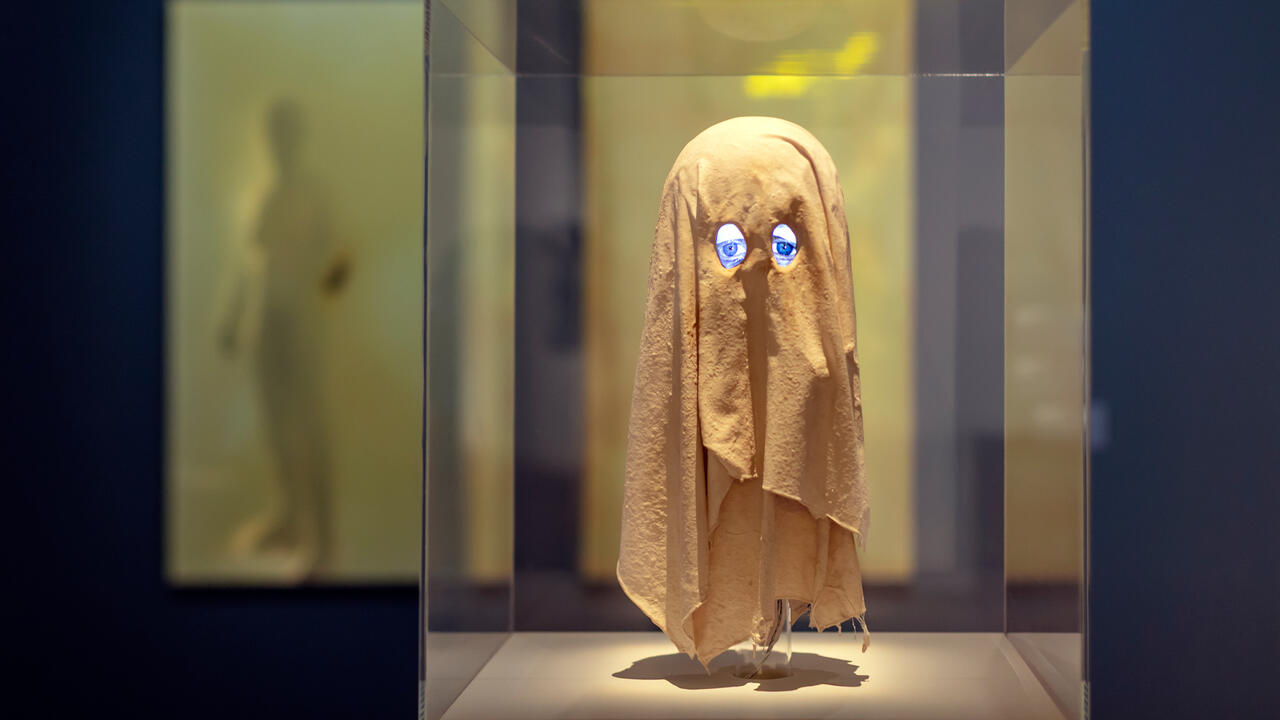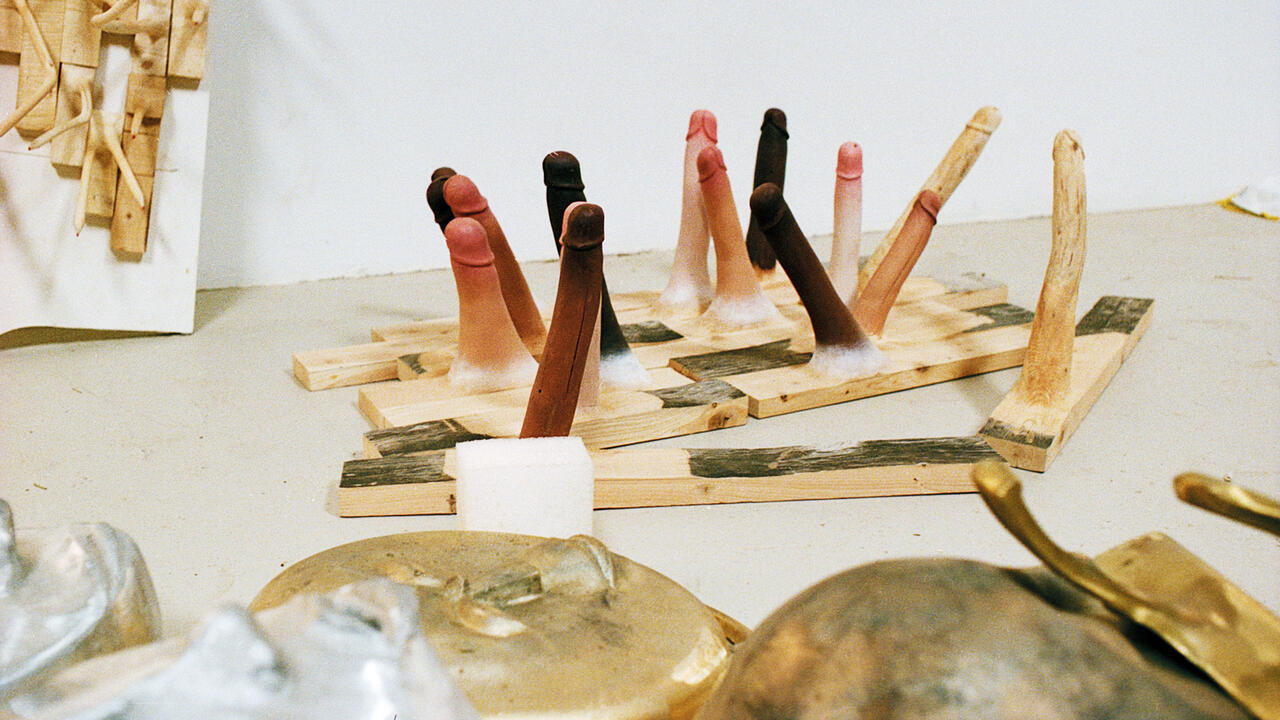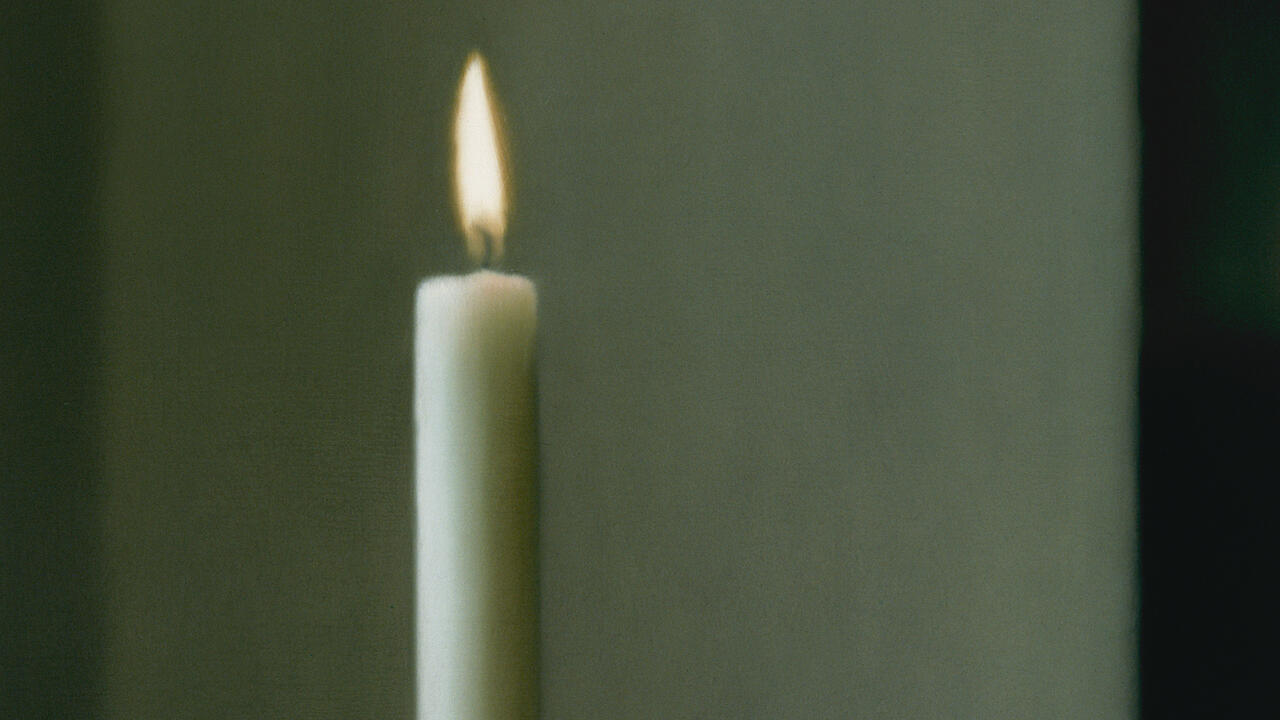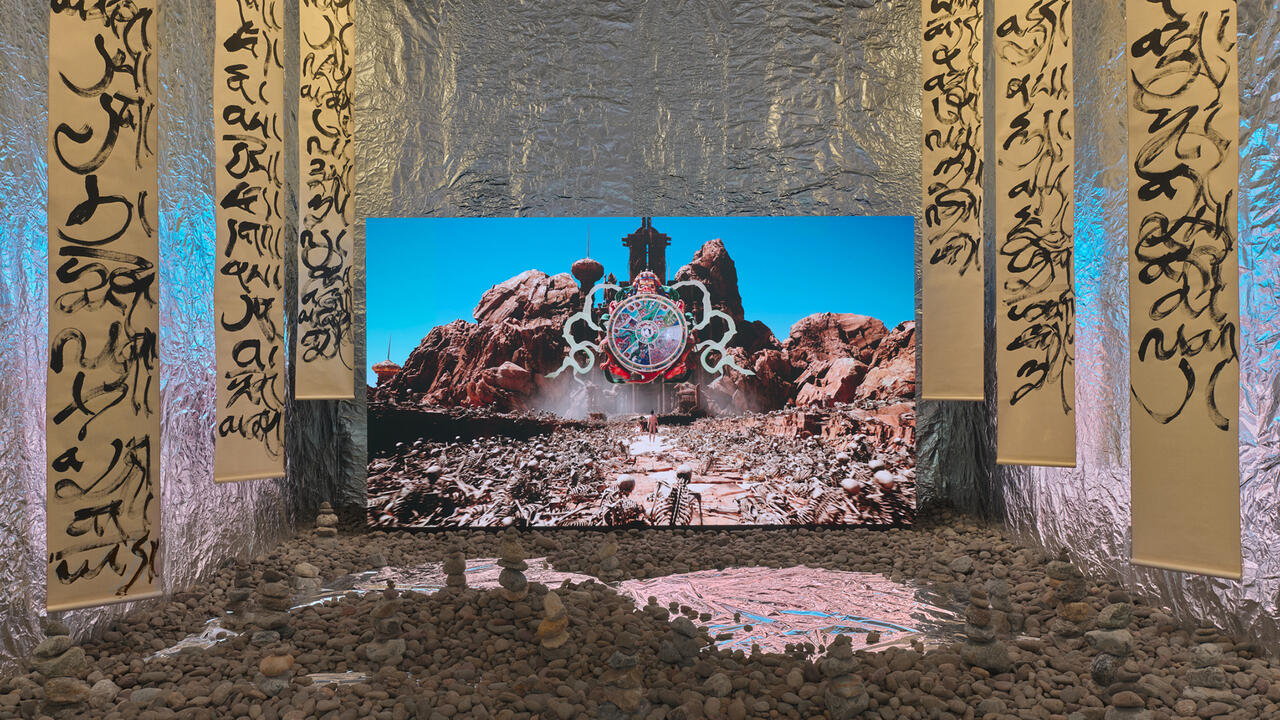Critic’s Guide: New York
The best shows to see across town during Frieze Week New York
The best shows to see across town during Frieze Week New York

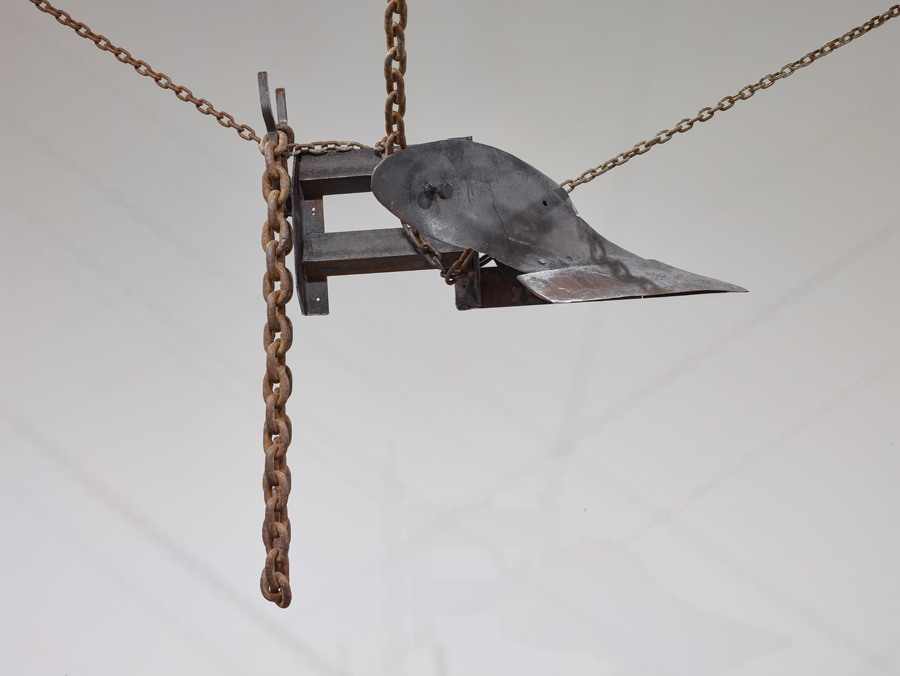
Melvin Edwards
Alexander Gray
13 April – 20 May
There’s an undeniable power to Melvin Edwards’s welded steel assemblages. The artist has been producing them for half a century, at roughly the same size: compact boli of melted metal, scavenged from scrapyards near his studio. Hung at the level of the artist’s own eye, some resemble African masks; scissor blades, car parts and mangled chains resolve themselves into sharp noses, eyes and fangs. ‘In Oklahoma’, the artist’s fifth solo at Alexander Gray, features new work Edwards made during a residency in the Sooner State, and includes the monumental Agricole (2016), a hulking plough head suspended from weighty chains. A number of gallery corners have been cordoned off by lengths of barbed wire (think Fred Sandback for a prison yard). If such materials seem to refer to the conditions of bondage – from slavery to the prison-industrial complex – Edwards brushes off political associations: he is, above all, a master of abstraction.

Sara Cwynar
Foxy Production
7 April – 14 May
I’d like to visit Sara Cwynar’s studio someday. I imagine the walls are densely covered with images she likes, pages torn from books, notes scribbled on the backs of old Polaroids – because these all crop up in her intensely layered photographs, which flit playfully between studio portraiture and mixed-media collage. Cwynar applies Roland Barthes’s theories of photographic time to the age of digital image-making: the objects she photographs seem to exist in four dimensions, both at rest and in motion, under observation while also in active use. The artist’s show at Foxy Production, ‘Rose Gold’, is named for her new film, a palimpsest of moving images and colour-study of the popular iPhone finish and 2016 Pantone Colour of the Year. The show also includes eye-popping portraits that emerged from Cwynar’s design for the 25th anniversary issue of frieze in September 2016.

Wilhelm Sasnal
Anton Kern
22 April – 20 May
At the entrance to Wilhelm Sasnal’s solo exhibition hangs a painting of the United Nations seal: painted at an angle, we seem to view it on a mounted TV screen, glowing blue in the darkness. Three small, sombre portraits of past Secretaries General – Ban Ki Moon, Kofi Annan and Kurt Waldheim – hang in an adjacent gallery. But it’s Sasnal’s portraits of politicians that truly unsettle; in them, our modern cult of personality seems utterly devoid of character, flattened as it might be on a computer monitor. See Angela Merkel, coldly staring at her younger, redder self; or Marine Le Pen, her features smoothed like a moulded mannequin’s. Upstairs, two nearly identical portraits depict Hillary Clinton approaching a podium, painted from behind, her dark figure outlined by the flash of cameras; in one, her outstretched hand gets caught in a corona of light. Sasnal’s show is the first in Anton Kern’s new Uptown space, a resplendent, five-story townhouse in the shadow of Trump Tower; if this seems auspicious, refer to the message in a painting by the door: ‘Choke on your silver spoon, you fucking Nazi!’

Rat Bastard Protective Association
Susan Inglett Gallery
27 April – 3 June
It’s 1957: Charlie Parker has died, Jack Kerouac has just published On the Road, and Bruce Conner has arrived in San Francisco. Conner, a native Kansan, found the Bay City teeming with junkies and dropouts, artists and outcasts; it was the perfect backdrop for his early found-object assemblages. Soon after, Conner met fellow artists Wallace Berman, Joan Brown, Jay DeFeo, George Herms and Wally Hedrick; the group moved into an apartment building at 2322 Fillmore, dubbed it ‘Painterland’, and formed the Rat Bastard Protective Association, named for a San Francisco trash collection company and a slur overheard at the gym. The Rat Bastards – who numbered more than a dozen at one point – came to define the art of Northern California, and in turn, the postwar United States. Their work spanned various media: Conner and Herms with sculptural assemblage, Brown and DeFeo with painting, Berman with collage and Jerry Burchard with photography. This compact exhibition at Susan Inglett Gallery, organized by Dr. Anastasia Aukeman – author of the recent Welcome to Painterland: Bruce Conner and the Rat Bastard Protective Association – is only the collective’s second show since 1958.

Céline Condorelli
P!
23 April – 21 May
This site-specific presentation by Céline Condorelli is the very last exhibition at P!, a bite-sized gallery off Bowery run by curator and designer Prem Krishnamurthy. Given her longstanding engagement with architecture and other exhibition ‘support structures’, Condorelli is a fitting capstone for the five-year project; for ‘Epilogue’, she’s applied vinyl prints to P!’s storefront windows, and cut sections from the interior walls, using the wood for upholstered gallery benches. The show’s inspiration, Bauhaus artist and designer Herbert Bayer’s ‘Extended Field of Vision’ (1930), rests in a rectangular excision, like a devotional altar in a wall niche. The diagram – which shows a male figure with an eyeball for a head peering up at a battery of floating wall panels – came to inspire an era of exhibition design that often put creativity and showmanship before viewers’ interpretive agency. If Condorelli’s interventions extend our field of vision, they leave us free to focus where (and when) we like.

Carol Rama
New Museum
26 April – 10 September
The New York art world calendar has long been dominated by men and I’m still sometimes tempted to recite gallery listings Louise Lawler-style, chirruping their names like a bird. This Frieze Week, though, winds of change have arrived: there’s Lawler’s own superb retrospective at the Museum of Modern Art, alongside a showcase of abstract work by women, and a Lygia Pape retrospective Uptown at the Met Breuer. ‘Black Radical Women’ at the Brooklyn Museum continues a year of feminist programming there. And this week, the New Museum leads the pack, turning over ever gallery to a female artist. It’s hard to pick a favourite, from Lynette Yaidom-Boakye’s soulful, richly hued portrait paintings to Kaari Upson’s sensual latex sculptures – but so many of these artists, regardless of age or national origin, take inspiration from Carol Rama. Rama, who died in 2015, was indeed an inspirational figure: a self-taught artist whose early sex-positive, feminist work was subjected to state censorship under the Italian fascist regime. Plenty of Rama’s early erotic drawings and watercolours appear in this generous exhibition – perverse, unapologetic depictions of female sensuality and fetishism completed as early as the late 1930s. In the 1960s, she responded to arte povera with gunked-up canvases adorned with collaged found objects, like brass brads and glass beads; best among these are shimmering, carnal ovoid forms that recall some of Upson’s later sculptures. ‘Carol Rama: Antibodies’, the largest presentation of the artist’s work to date in the US, focuses on her representation (whether figural or abstract) of the human (primarily female) body, and her insistence on the primacy of bodily experience. Nothing could be more prescient now than Rama’s reminder that we are all sacs of viscera, in search of pleasure and fulfilment while hovering on the edge of madness.
Other recommended shows:
Felix Gonzalez-Torres
David Zwirner
27 April – 24 June
Louise Lawler
MoMA
30 April – 30 July
Leslie Hewitt
Sikkema Jenkins
7 April – 13 May
‘A Third Gender’
Japan Society
10 March – 11 June
Kevin Jerome Everson
Andrew Kreps
13 April – 13 May
For more current shows in New York visit On View.
Main image: Sara Cwynar, Tracy (One Hundred Consecutive Years), 2017, dye sublimation print on aluminium, 76 x 97 cm. Courtesy: Foxy Production, New York © the artist; photograph: Mark Woods









